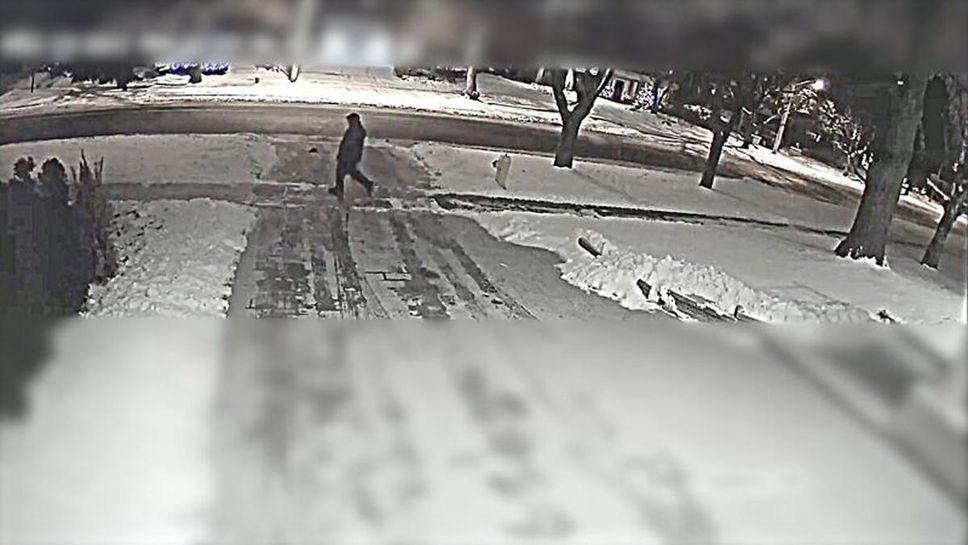The Toronto Star gained court access to documents from the police investigation in the four-year unsolved murder of Barry and Honey Sherman. Last week, we detailed the results of the first year of the homicide investigation and how intensive interviews with the Sherman family, friends and business associates led detectives to check 35 cell phones to see if their owners were harassing the couple. In today’s installment, the Star reveals how empty-handed investigators decided to launch a larger web.
If you were on the streets around the Toronto home of murder victims Barry and Honey Sherman on July 25, 2018, you would have seen a youthful-looking Toronto police officer making a series of calls on a cell phone and then methodically recording the results on a laptop. That was Det. Const. Dennis Yim of the Toronto Police Homicide Unit.
Yim made the same series of test calls from the parking lot of Apotex, the generic drug company founded by Barry and turned into a multibillion dollar company. Yim was setting the table for a new kind of search, looking for an electronic needle in a haystack. It would lead to a request in early 2019 for what is known in mobile phone terms as a “tower dump.”
Yim had a 12-year detective career at the time, in his mid-30s, with a youthful face and heavily cropped hair. During the full four years of the investigation, he has been the only full-time officer in the case.
At the end of 2018, a year after the case, the police knew that Barry and Honey were killed between 9 pm and midnight on Wednesday, December 13, 2017. They knew that Barry was tied by the wrists before he died. They knew that both Shermans were strangled with a thin ligature of some kind, and restrained in a seated position with belts wrapped around their necks and attached to a low railing that surrounded the basement pool room. after they were dead. Honey had been hit in the face, leaving a small mark on her right eye. They both wore shoes and, as the documents reveal, police were asking Sherman’s family and friends if it was the couple’s custom to remove their shoes when they got home, a question that no one could conclusively answer. Barry had his glasses on, perfectly positioned on his nose.
What the police did not know was who killed the Shermans, although family and friends were quick to point fingers at Barry’s business colleagues, suggestions that police documents show got nowhere.
But what the police did have was a series of images of an unknown person. While police at a news conference this month said they did not know whether the person was male or female, recently released documents clearly identify the individual as “male.”
And the new documents show that the image that the public saw (the police released a short video clip of the unknown man with a strange gait in hopes that the public could identify himself) is the last image they have, captured 1.3 kilometers to the East of Sherman’s house. in North York.
“After this image, the unknown man was not seen on video anywhere else, as no other known video was available and other locations with video had already been overwritten,” the police documents show. Police say they have another video showing the individual approaching Sherman’s home, disappearing from any cameras in the area, then reappearing and moving away from the home. Police say the person spent a “suspicious” amount of time near Sherman’s home on Old Colony Road.
In a now unsealed court application called ITO (Information to Obtain a Search Warrant or Production Warrant), the police refer to this mysterious man for the first time as the “alleged murderer”.
After multiple ITO requests in court, not all successful because the police did not have the proper reasons for the requests, to obtain cell phone tracking and transmission data for 35 “persons of interest” in the Sherman investigation, the police in January 2019 he took a big step forward. Moving on from their narrow search to see if known cell phones in that group of 35 were around Old Colony Road or Apotex on the night of the murders, police asked Ontario Court of Justice Judge Leslie Pringle to approve a different kind of order of presentation.
Yim and his colleagues from the Toronto homicide unit wanted a “tower dump,” a request sometimes made by the police. It is controversial because hundreds or thousands of innocent parties and their data can be dumped in the “tower dump.” Here are the mechanics behind it:
When a cell phone is used to make a call or receive a text message, it communicates with a cell tower in the area, creating a “handshake,” according to Yim’s request. These data are specific to an area; think about drawing an invisible electronic box around a property or section of street. When Yim, in the summer of 2018, was walking around the neighborhood making calls on a cell phone issued by Toronto police, he was looking to create “handshakes” in various areas to help with the tower dump. Some locations were at Sherman’s address, others at a house across the street (no explanation for this is given in the documents), some on the route where the unknown man was seen, and some at Apotex, where Barry and Honey they were before. going home the day they died.
Yim was asking for a tower dump so he could find any unknown devices in those areas that night and then see what other devices they were communicating with. The request was to be made to Rogers, Bell, Telus, and Freedom Mobile.
The police would then compare the results of the tower dump with the 35 numbers that Yim had amassed and others that emerged from the investigation.
If the police find numbers associated with so-called “burner” phones, prepaid phones that are not associated with an easily identifiable person, the police would have to try to learn the identity of the cell phone user by other means.
To make the new request acceptable to Pringle, the police emphasized that data from the tower’s landfills would be kept in password-protected files and accessed by members of the police intelligence unit. Those officers would then evaluate the data and only relay information pertinent to Sherman’s investigation. The personal information of other people inadvertently caught in this new search will be kept completely private.
The problem with this request made 13 months after the investigation was that some of the data had already been lost. For example, some cell phone providers delete data from text messages after 30 to 150 days. Police feared more data would be lost if this new request was not approved.
The documents Star has obtained thus far do not show whether the tower download request was successful.
These documents confirm that, as the Star reported, Toronto police had virtually stopped conducting interviews at the end of the first year. Yim claims in the documents that detectives had turned up empty-handed when speaking to Sherman’s neighbors.
“An extensive neighborhood survey has not revealed anyone who could provide convincing information in relation to the Shermans’ deaths,” Yim wrote in his January 2019 request.
The Star has spoken to people on Sherman Street who were never shown footage of, for example, the mysterious man police believe murdered the Shermans. Those neighbors expressed surprise that the police did not approach them.
Many of the documents turned over to the Star (over 1,000 pages in the last 10 days) are heavily redacted, making it difficult to get a complete picture of the investigation as it unfolded. Some wording does not seem to make sense.
For example, the police have completely redacted the text of a 2011 Ontario Court of Appeals decision, in which Judge David Watt explained how cell phone “tower dumps” were used in a theft investigation. The text, included by the police to support their request for the Sherman Tower landfill, is available to the public in legal databases.
Reference-www.thestar.com

